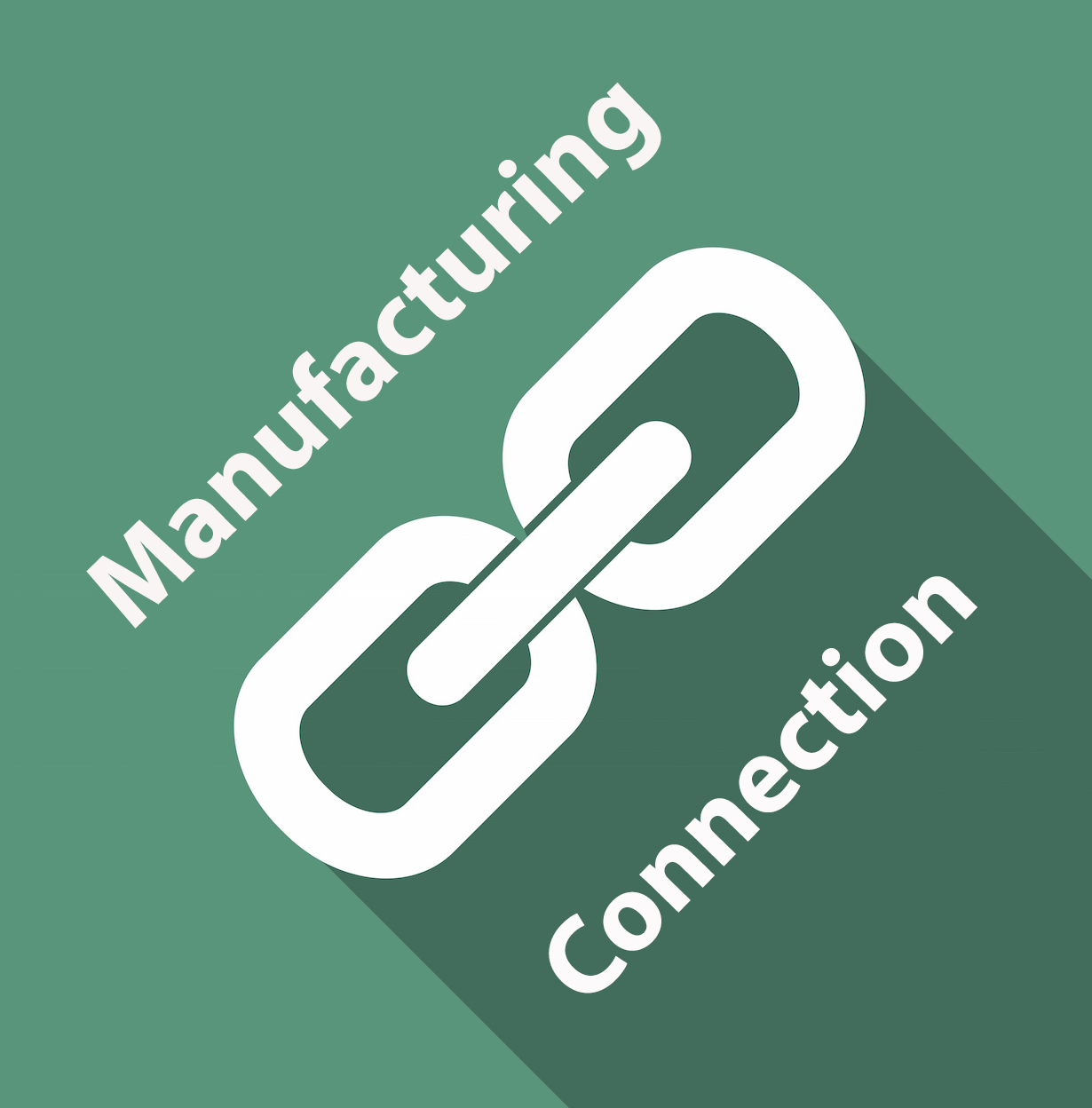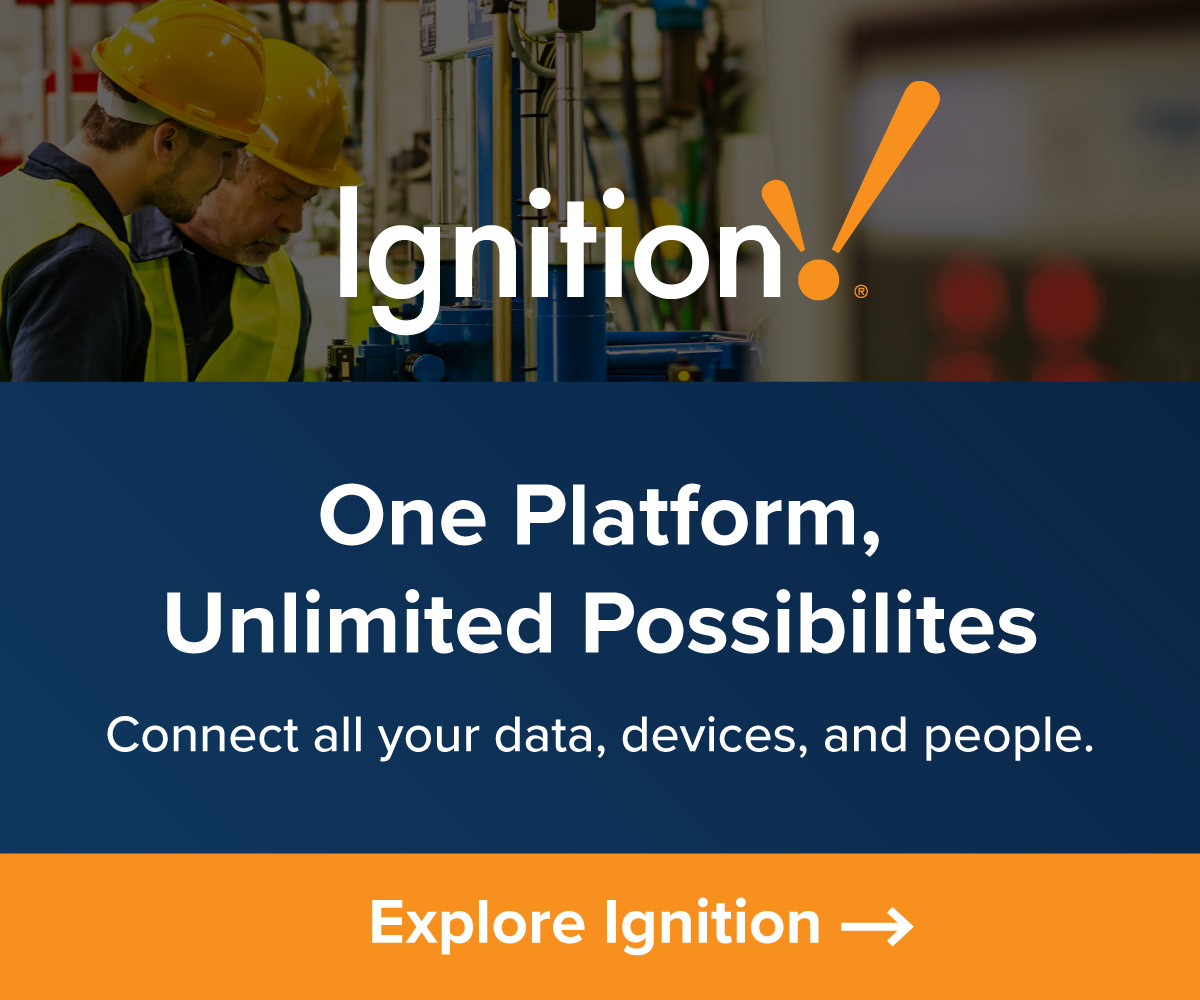
by Gary Mintchell | Apr 15, 2016 | Asset Performance Management, Operations Management
The overriding benefit we provide to enterprise business as operators of producing plants is production operational continuity—maximum output, greatest efficiency, best product margin.
Too often we get so wrapped up in our technology discussions that we forget the objectives. It’s not all about technology. It is all about using the appropriate technology to help build better businesses that serve customers well.
Editors face another problem writing articles about the industry. Marketing communications professionals delight in lining up interviews with appropriate people in their companies. The person interviewed has a story to tell. But most editors (I guess, I wasn’t one) have the theme and outline of the story already in mind, and they also have limited space. Therefore, they are looking for quotes they can pull out to support their theses, while the actual quote may only be a paragraph gleaned from a 30-45 minute interview.
So, Tim Sowell of Schneider Electric recently talked about an interview:
Basically the editor wanted to understand about “big data” being applied in a particular industry, again it was someone with a technology concept the market is throwing about vs really understanding the business / operational challenge the industry is facing.
But Sowell pointed to his recent theme about business needs:
- Operational Continuity: Maintaining their producing plants at the maximum output, with greatest efficiency, and best product margin
- Agility: to supply the market with the correct product at the right quality, and right price and the right time in an every dynamic market
- Asset Management/ Utilization: This is both fixed, mobile capital assets (non breathing assets, such as plants, trucks, ships) and the human assets (breathing assets).
I have been writing a long white paper focusing on these issues from an interoperable standards point of view. We’re looking especially at the lifecycle of critical assets. These observations from Sowell reflect the trends we’re experiencing.
We find that, as globalization increases, the buying and selling of capital assets increasingly happen, introducing of challenge of how do incorporate existing systems, automation, and practices into your overall value chain to provide the above “Operational Continuity” and “Agility”. Same when the asset is sold how you disengage it cleanly especially with IP in the products and process. Combine this with the dynamic Human Asset landscape where human assets are moving regularly between plants and locations. Causing on a site not to have the required experience to make decisions, but people are in a role of having to make the decisions. YES the asset world for both capital assets and human assets is shifting form traditional stability in both classes for the last 20 years to one of both dynamic.
He makes a crucial point. The importance of tying lifecycle asset management to operational continuity.
What are you doing with asset management?

by Gary Mintchell | Apr 6, 2016 | Automation, Operations Management, Workforce
Automation and people. Some people think that they are opposed to each other. A zero-sum game.
As I developed the editorial focus of the old Automation World, I wrote about how they actually go together. In the very first issue, I interviewed a Lean practitioner. I had to convince him. He told me that automation was bad. People could do better every time. Wait, I responded. Let’s not go overboard here. There are definitely things I’d rather have a machine and automation do for both consistency and safety reasons.
Sometimes a job is just boring. People lose attention. Either quality or safety suffers.
Smart Work Mindset
 Tim Sowell’s latest blog post reminded me of that old discussion. The difference is, well aside from about 100 IQ points and that he’s contemplating while watching the Pacific, that he’s updated the idea while taking it to another level.
Tim Sowell’s latest blog post reminded me of that old discussion. The difference is, well aside from about 100 IQ points and that he’s contemplating while watching the Pacific, that he’s updated the idea while taking it to another level.
Consider:
[At] one company I was engaged with last week their thought pattern was still about replacing the personnel on the plant, going to total automation. While I agree with automation, it is required for consistently and velocity of production. But I struggle with agility.
Two days latter I was at another company and they were all about empowerment of people. They wanted to automate process and operations to free up people to add complimentary agility and “out of the box” thinking. As one C level said to me, our market is changing as fast as we ever seen.
Stepping back and looking at both these companies the second company was more automated than the first, and the second was investing in automation more than the first. But their attitude was to gain consistently and free up people from repeatable tasks, and increase the responsibility of people, and empower people to make decisions fast.
The diagram below really depicts what I started to introduce last week, and what this second company believed in.

Notice how he has applied the idea to agility. The automation mindset looks for consistency over a longer production run. The foundation of Lean is respect for people (and how their ideas improve the process). Sowell’s second company was “all about empowerment of people.”
He continues with the thought:
The key thinkers in the industry are not looking to dependency on 1 to 2 people, they are leveraging the concept of “crowd sourcing” thru a active community of people. As we look at the operational/ automation world of the future the key pillars will be:
-
Ability to capture knowledge and intelligence into the system to automate process, and operations. Key is this is not just traditional automation in PLCs/ DCS etc, it is capturing repeatable knowledge and decisions. So the system must bread a culture of contribution and use natively.
-
Ability to have a community of workers who can share collaborated “naturally” with ease, no matter the location of the users and state. Foundational to this is the ability trust the information, the measures so a common understanding of the situation, and basis for decision can be made.
Check out his blog. It’ll make you think. And that is a good thing.

by Gary Mintchell | Mar 7, 2016 | Operations Management, Software
 Tim Sowell always packs many operations management ideas into a brief blog post. Sowell is a VP and Fellow at Schneider Electric Software (Wonderware). I’ve looked at his posts before. He is always thinking out in front of most people.
Tim Sowell always packs many operations management ideas into a brief blog post. Sowell is a VP and Fellow at Schneider Electric Software (Wonderware). I’ve looked at his posts before. He is always thinking out in front of most people.
His Feb. 14 post, Composite Frameworks What Are They, the Shift to Model Driven vs. Custom: How Do They Play?, takes a look at moving the user experience of operations management software into newer territory.
He probably says much more, but this is the take I’m going to analyze. He’s pointing out the difficulties of using traditional approaches to programming and presenting User Interfaces in a way that keeps pace with today’s expectations.
“Traditionally companies have built User Interfaces to an API, with the calls needed to execution actions and transactions; these have worked well especially within a plant. But a key to operational systems being effective and agile is their ability to adapt on a regular basis. This requires a sustainable and evolving system. This is especially important in form/ transaction activities where information is provided and where actions/ data input, and procedures need to be carried out.”
He does not stop there but proceeds to enumerate some challenges:
- Operational Process cross-over functional domains and applications
- Lack of governance
- AgilityResponsive manufacturing business processes
- Increase the performance of their people assets
- Too much Custom Code, making it unmanageable and evolutionary
He wonders why we can’t use techniques gleaned from Business Process Modeling. That’s a good question! He notes that some people will say that BPM is not real-time like manufacturing/industrial applications are. But he rebuts that “this also aligns with what the industrial world is very comfortable world with—that of ‘stable in control loops’.”
Operations management solutions
Here are some proposed solutions:
- Providing a graphical configuration environment for the capture and defining of operational process including the validation of data input, and guiding actions, working inline with the user Interface/ forms etc.
- Providing a framework for building of reusable forms, and reusable procedures that can be managed as templates and standards to enforce consistent operational practices.
- Empowering the operational domain people to develop, evolve and manage their procedures.
“Most of all empowering the different roles in the plant, that operational close loop moving to an “activity” centric system where information, and action is driven from a consistent operational model and practices.”
This is a consistent Sowell message. Let’s see what we can template-ize or project as a model rather than custom code everything.
More and more owner/operators and users I talk to are getting tired of the expense and lead-time for custom coded projects. They need the speed and flexibility of using models and standards for application implementation. I think this is where Sowell was headed (if not, he’ll correct me, I’m sure). This will serve to move industry forward as a more profitable contributor to enterprise health.

by Gary Mintchell | Jan 6, 2016 | Operations Management
 Tim Sowell of Schneider Electric Software (Wonderware) thinks out in front of the curve. His customer contacts help keep him on his toes. His new year’s kick-off blog post revealed four key areas for the coming year based on a conversation with a customer.
Tim Sowell of Schneider Electric Software (Wonderware) thinks out in front of the curve. His customer contacts help keep him on his toes. His new year’s kick-off blog post revealed four key areas for the coming year based on a conversation with a customer.
These insights should turn our attention away from media glitz and toward doing real work using technologies plus insights.
You might ask what about “big data” and the “internet of things” but these are technologies that will be part of the enabling system for a new operational solution.
In his previous blog he had asked, “how much transformation was happening?” He received a comment from a friend saying the momentum of change is well underway, and happening at increasing pace.
There were 4 areas that he felt his business and associated industry where trying grapple with to stay ahead.
1/ Agility of effective, valued products and brands to the market. So the challenge of “new product Innovation” and then “New Product Introduction” and delivering it to the market at the correct margin to be competitive in timely manner is a whole focus. His comment was this is the core competitive advantage that his company identifies.
2/ Operational Workforce transformation. He agrees with me that too much focus has been on the “aging workforce issue” and that most of HR and Operational teams have missed the bigger transformation, and that is the one of new generation work methods and transformation in workspace that goes with it. He felt like his company woke up to this mid way thru last year when they could not just not fill positions, but are having significant challenges in retaining talent, not within the company but in roles. He felt like initially people thought that would just get a transition to a new workforce yes younger of different experience. But they had not realized that way in which people will work, think, interact, and gain satisfaction will also change. [I think this is a key insight. For years I have written and spoken about getting past the “aging workforce” discussion. In many cases companies had to bring previously laid off engineers back as contractors in order to get essential engineering done. They just couldn’t get the new people needed using the same old tools and methods. Gary]
3/ “Planet Awareness, Image”. He raised this as a real strategy for evolving the brand of the company to been seen as proactive to the environment, to attract further “feeling satisfaction” of customers. He also stated that government regulation, and increasing costs of disposing of waste, and energy costs also are now seen a significant bottom line costs, and must be managed more efficiently. But during this discussion, it was also clear that the perception of being “proactive to the environment” in use of energy, carbon footprint, environment etc was also a key strategy for attractive talent to work in the company. [This idea has been coming for many years. I am happy to see it gaining traction in a major company. I think leadership in our industry that attracts bright, young people must tap into larger societal themes. Gary.]
4/ Transparency across the total product value chain. [Technology has been moving us this direction for some time. Once again, human work is catching up to the technological capabilities. Gary]
It was clear that the 4 strategies was really about changing the way in which the company manages and executes operational work, no matter how big or small.
Pillars of Operational Solution approach:
- Everyone having access to information and knowledge no matter their state or location, this means internet becomes a part of the solution backbone.
- Cyber Security is very much top of mind, both in strategy to secure, manage, to contain cost and risk.
- Data validation/ and contextualization, if transparency and faster decisions are required how do you gain consistent information across different sites. \
- Delivering a new “operational Workspace/ experience” that has embedded knowledge that does not get stale, and enables imitative learning for a dynamic and collaborative workforce.

by Gary Mintchell | Oct 1, 2015 | Commentary, Software, Technology
I have heard from friends (non-editors) who attended the Wonderware software conference. I have edited their news items into what I hope is a coherent post. This news includes some significant information that I have not seen elsewhere, yet. I should get my friends to report more. Getting the point of view of users is valuable. I hope you agree.
This also shows what I was talking about Monday where an industry leader under attack can push the envelop a different direction in order to remain fresh and offer customers more.
1) “It’s getting really cloudy.”
They showed off a number of tools, some old, some new that are all based around a cloud platform or at a minimum communication with the cloud. They are continuing to push really really hard the Wonderware Online and Smart Glance products. Talking with Saadi Kermani, the main evangelist for them, they are in continual release mode and have a long list of planned features that will be rolling out over the coming months designed to keep them up with, or exceed, competitive offerings.
“Also the new version of Smart Glance is really nice and very modern look and feel.” The best part about something like smart glance is that it’s a relatively simple product to get up and running for your org. And pretty cost effective to boot. “My personal analysis is that what will make Wonderware Online super valuable is an ecosystem of partners building sophisticated apps in cloud platforms like Azure and others.”
Some other big cloud stuff. They previewed Wonderware Development Studio online. Now you can log on with a web browser, stand up an environment picking and choosing which machines you want, what software is installed on each, how the redundancy is configured, etc. Hit go and in some amount of time..maybe an hour or so… the machines are ready for you to login via remote desktop running on Azure. This seems like a really awesome setup for integrators that don’t want to maintain a bunch of different environments and versions. Supposedly there was no cost to have then configured. “My only concern is the pricing and how easy it might be to run up a $1K bill before you know it. I did ask about the idea of buying the IP and underlying system that did the automation so you can run it on premise. If I remember right the person I was talking to said it might be possible but wasn’t on the current roadmap.”
2) Hello IOT
A guy from Microsoft had a nice presentation on Monday afternoon talking about Azure and how Azure fits into the IOT space. It was a bit high level but I think we need all the education we can get right now.
During the intro sessions on Tuesday John Krajewski discussed a little more about IOT and specifically talked about their new MQTT OI Server. OI Server is the new name they have given to IO drivers. They are doing some different things with packaging and scalability but that’s incidental to the IOT discussion. Back to IOT, they have written a server that can talk MQTT natively so you can seamlessly push and pull data to/from System Platform with other devices talking MQTT just like you would a PLC.
Alvaro Martiniez the product manager admitted it was early Alpha stage for the product but I hope it opened some people’s eyes to possibilities. “I can’t wait to get my hands on it.”
An integrator presentation to a standing room only crowd discussed multiple aspects of IOT. It was really broken into three parts. The first was an overview of 5 of the major protocols one might come across when getting into the IOT space. Next was a technical deep dive on one of the protocols, MQTT. [Gary’s note: At the Inductive conference, I attended a session by one of the developers of MQTT. This is an important protocol, riding atop TCP/IP stack, that can standardize IoT messaging.] Next were 4 or 5 demos showing the use of MQTT inside or integrated with System Platform and the Historian. “My personal favorite was showing how you could build a simple set of code that read MQTT data and sent it directly to the Historian… which in theory means you could have 100% cloud infrastructure for piping device data straight over to the Wonderware Online historian.”
3) Next Gen
They have been working on revamping the System Platform look, feel, and function for the last few years. The 2014 releases have made some pretty big shifts in the functionality space but nothing major expected until the next release. Tim Sowell’s comments about a unified operations center are dead on with the vision.
The biggest change you are going to see.. and they talked about this very publicly so I don’t think I’m giving anything away, is that InTouch is no longer the shell for visualization. It is now essentially a compiled stand-alone app that is build from many panes that you create and configure from within the System Platform Graphics platform. The visualization engine will use the context of the graphics and objects to make navigation easier. “But the bigger concept is that this is now an operations center, not a simple HMI.”
Longer term there should be a play for higher end integrators and pure software plays to develop Apps that plugin to the operations center and provide additional value and context.
Lots and lots of discussion of context. When these apps are run inside the operations center they will automatically know what’s being displayed on the screens and can automatically adjust. A simple example is that you pull up a graphic with a tank farm. Maybe you have a video feed app with live cameras on the tanks and it automatically swaps to the correct camera view. Or you have another pane with customers orders from the ERP so you know what tanker trucks you should be expecting in the next few hours. “While this has technically been possible before I think the key is that they are going to be adding a lot of functionality to make these otherwise standalone functions a first class citizen within the Operations view.”
They are also making big changes in the development environment trying to make the engineering experience more user friendly. To me this is a clear play to make System Platform look a lot less intimidating and make the 15 minute demo a lot easier and more obvious. For high end engineers and integrators this new layout and development method will probably be a turnoff but I think it will help Wonderware tell the System Platform story easier and get newer, less sophisticated, customers on board.


 Tim Sowell’s
Tim Sowell’s 

 Tim Sowell always packs many operations management ideas into a brief blog post. Sowell is a VP and Fellow at Schneider Electric Software (Wonderware). I’ve looked at his posts before. He is always thinking out in front of most people.
Tim Sowell always packs many operations management ideas into a brief blog post. Sowell is a VP and Fellow at Schneider Electric Software (Wonderware). I’ve looked at his posts before. He is always thinking out in front of most people.



